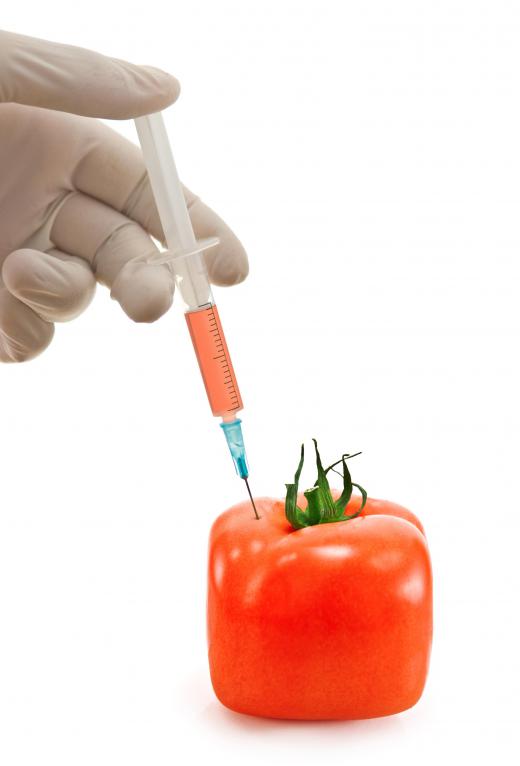What are Genetically Modified Organisms?
Genetically modified organisms (GMOs) are living things whose DeoxyriboNucleic Acid (DNA) has been changed by humans using the techniques of genetic engineering. The mechanism for creating a GMO is called the recombinant DNA technique. It involves combining strands of DNA from different sources to create a new DNA molecule that has a different combination of genes than that which occurs naturally. The newly created DNA is then inserted into a living organism or an egg or sperm, resulting in a genetically modified organism.
There are two classes of genetically modified organisms, cisgenic organisms and transgenic organisms. Cisgenic organisms are GMOs that result from the combination of different strands of DNA, which all originate from the same, or very similar, species. All of the DNA used in the process comes from organisms that are very closely related, usually defined as organisms that are able to breed together. For example, DNA might be taken from a variety of wild oat that has some beneficial trait, such as a resistance to a certain kind of pest. This DNA could then be spliced into the DNA of a cultivated variety of oat in order to produce a new strain that desirable traits from both varieties.

Transgenic organisms are genetically modified organisms that include DNA from two different species. Transgenic microorganisms are the most commonly created transgenic organisms. The simple DNA of bacteria lends itself to relatively straightforward recombinant DNA methods.
There are many examples of transgenic microorganisms that are used in a variety of applications. Certain bacteria are genetically engineered to produce insulin for the treatment of human diabetes. Other bacteria are engineered for the production of blood proteins to aid clotting for the treatment of hemophilia. In agriculture, some transgenic microbes are used to stimulate better crop growth, and to produce toxic chemicals that inhibit the proliferation of certain crop pests.

GMO research is often considered controversial for a number of reasons. Ethical issues aside, the creation of genetically modified organisms, and their introduction into the environment, can have unforeseen impacts. The growth of genetically modified crops in agriculture may lead to the spread of such genetically modified organisms into the wider environment, as it is difficult to completely isolate organisms in outdoor fields. Pollen from a genetically modified crop can, for example, easily cross wide-open spaces, and potentially cause the genetically modified plants being grown to be crossed with an existing species in a neighboring field.
AS FEATURED ON:
AS FEATURED ON:
















Discussion Comments
@Acracadabra - I agree. It is inevitable and if it can be used for good than it should be. But one of my biggest concerns is engineered plants cross-breeding with weeds. Let's assume that the said plant is engineered to resist herbicides. When it cross-breeds it could create a sort of superweed that is also resistant to herbicides. On a large scale, scenarios like that could create huge problems.
Despite the possible pitfalls I have to say advances in the field of genetically altered animals and food supplies are inevitable. This is cutting edge science, and the least we can do is embrace it.
Has anyone heard of the 'grapple'? It's a kind of cross between an apple and grapes. They say it tastes amazing, yet it's a genetically engineered organism!
If that helps people in developing countries get vitamin C I'm not going to argue. So long as this magic is worked for those who really need it then it's fine. Just don't mess with fruit and veg in the local stores. I don't need tomatoes which stay fresh for weeks, that's just wrong!
I saw a really scary TV show online the other day! The reporter claimed that scientists are experimenting with genetically modified animals, with the end result being organ transplants for humans!
I have a lot of sympathy for people who are sick and need a new heart or liver but I can't help worrying that we are meddling with nature here.
I think genetically modified food is the wave of the future and could be a great solution for malnourished people in third world countries who only have access to one staple crop. We all know it is pretty much impossible to get all of our nutrients from one food. However, if we could genetically modify foods like maize and rice to include more nutrients, we could begin to solve one of humanity's biggest problems.
Post your comments